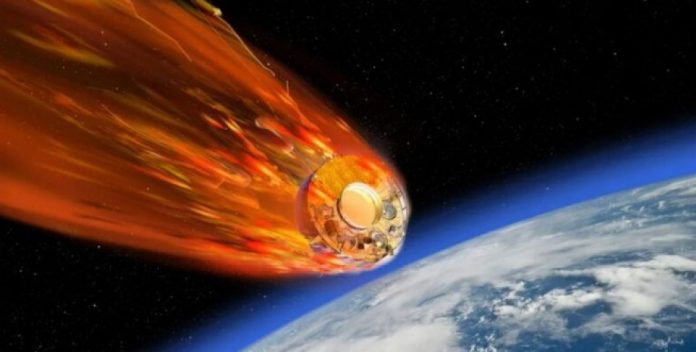З 1972 року на орбіті навколо Землі перебуває посадковий модуль “Космос-482”, що мав на меті дослідити Венеру, але через технічну несправність так і не зміг виконати свою місію. Тепер, через понад півстоліття, цей радянський космічний корабель, що став частиною космічного сміття, наближається до падіння на нашу планету.
Модуль “Космос-482” був запущений 31 березня 1972 року з метою вивчення Венери. Однак після успішного старту корабель потрапив на орбіту Землі, де через аварію не зміг продовжити свою подорож до Червоної планети. Модуль залишився обертатися навколо нашої планети, ставши частиною космічного сміття, але з розмірами і вагою, що значно перевищують більшість інших уламків. За даними вчених, які стежать за рухом космічного сміття, “Космос-482” має потрапити в атмосферу Землі в період з 8 по 11 травня 2025 року. Це старе космічне обладнання, діаметром 1 метр і вагою майже 500 кг, буде рухатися до Землі зі швидкістю близько 240 км/год. Однак точний час та місце його падіння залишаються під питанням, оскільки на рух космічних об’єктів можуть впливати сонячні активності, що змінюють атмосферний опір. Поки що найбільш ймовірно, що модуль “Космос-482” впаде між 52 градусами північної і південної широти, з огляду на те, що більша частина Землі вкрита океанами, науковці вважають, що падіння ймовірніше відбудеться у води. Однак є ймовірність, що модуль може впасти на сушу, навіть в населені райони.
Цей модуль був спроектований так, щоб витримувати екстремальні умови на Венері, включаючи високу температуру до 500°C і надзвичайний тиск. Тому є шанс, що він не згорить повністю в атмосфері Землі, а досягне її поверхні. У разі падіння модуль “Космос-482” буде виглядати як великий метеор, яскраво світячись на небі, що дозволить спостерігачам побачити це подія.
Ця історія не тільки нагадує нам про старі космічні проекти, але й дає ще один урок про те, як багато космічного сміття залишається на орбіті.


